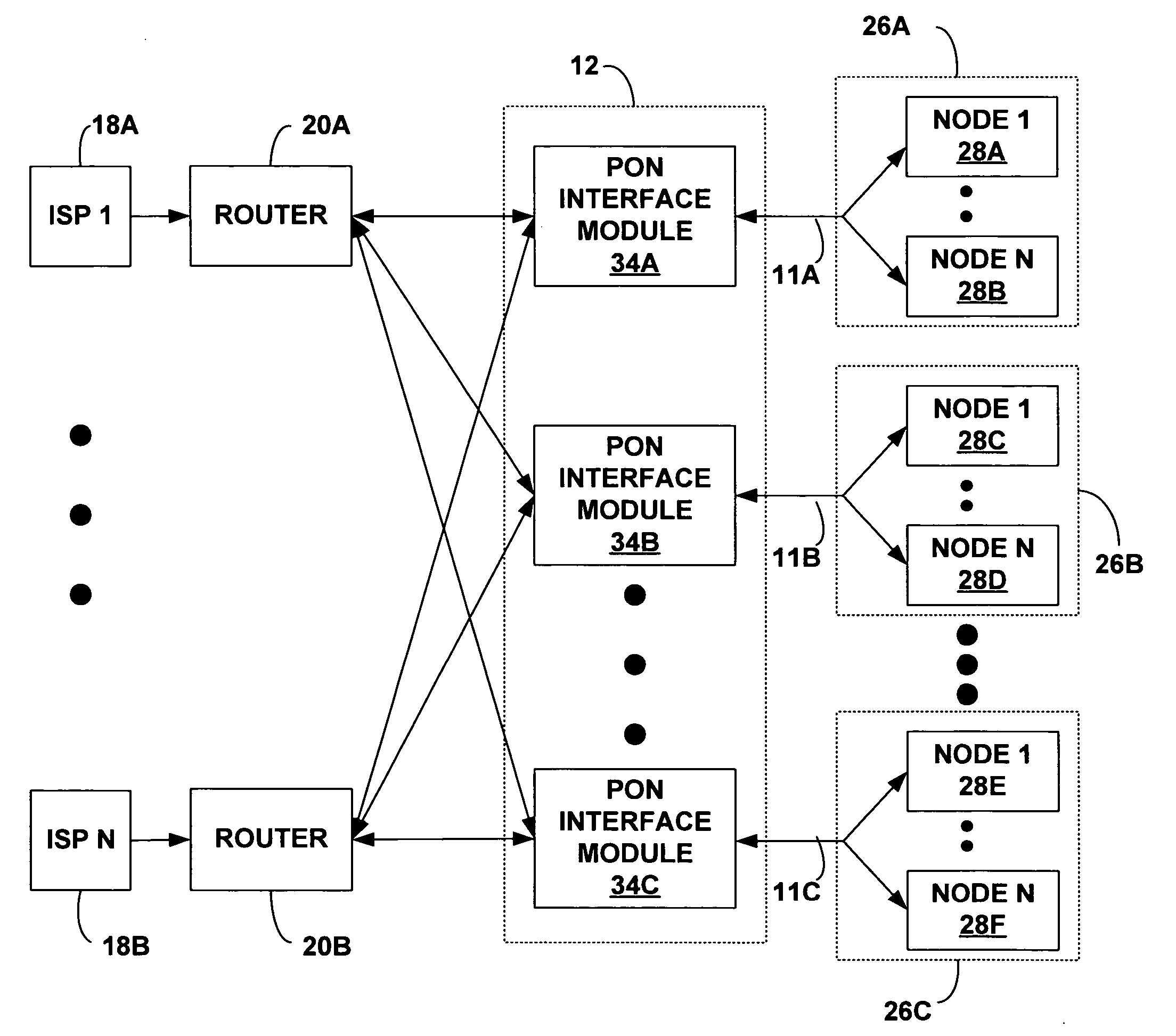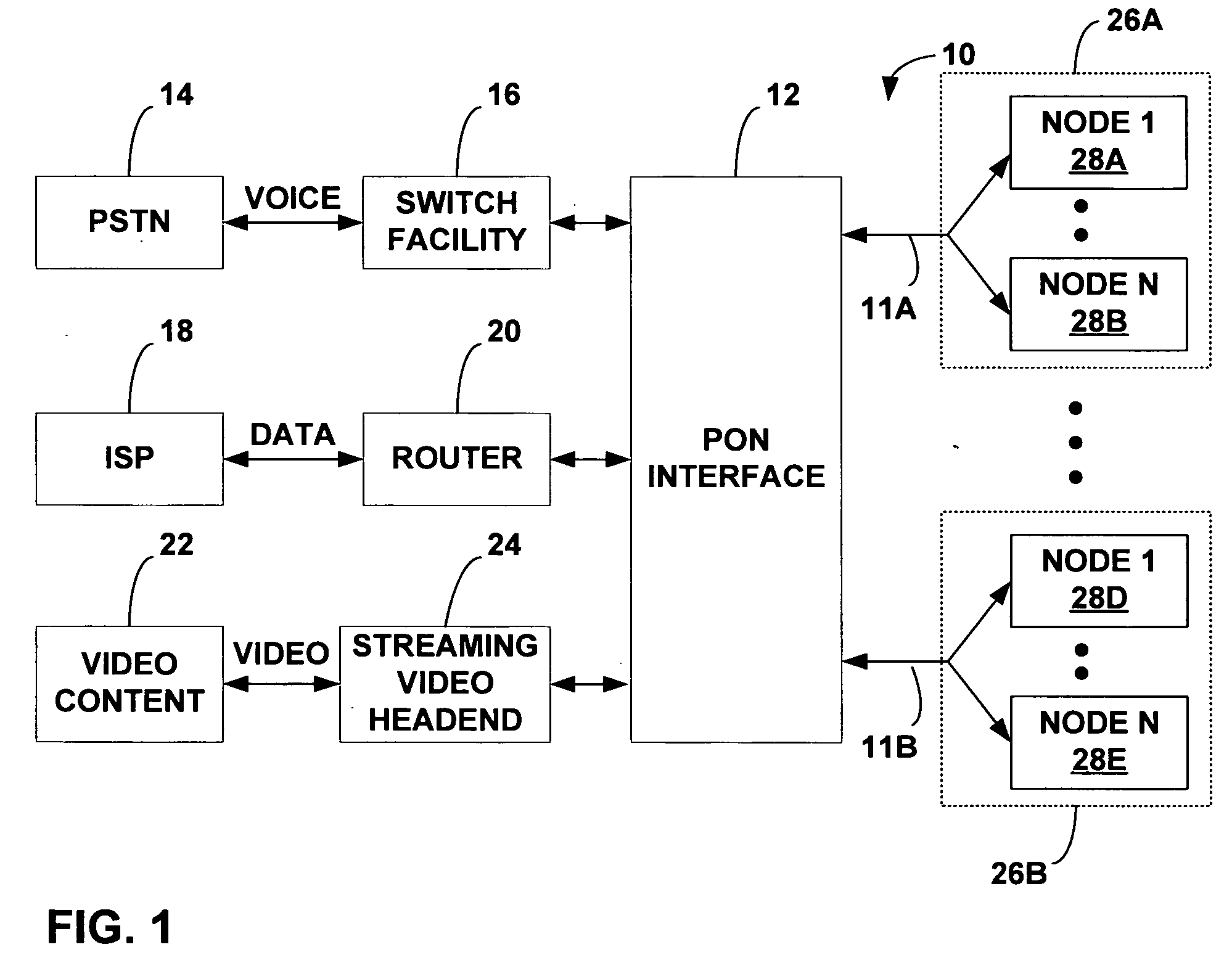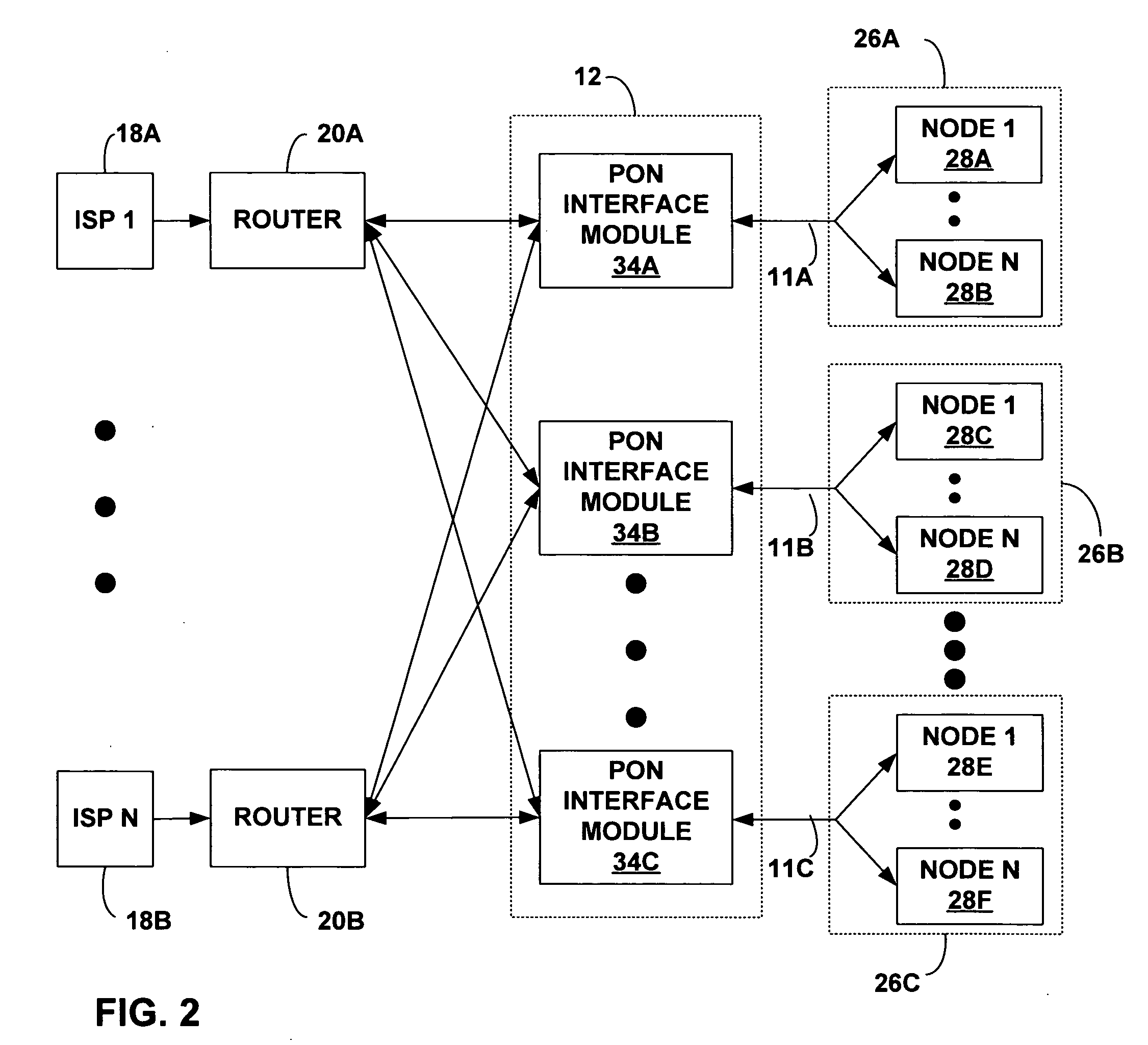Network address assignment in a passive optical network
a passive optical network and network address technology, applied in the field of computer networking, can solve the problems of wasting ip addresses, consuming an entire subnet scope of ip addresses, and wasting ip addresses, so as to achieve the effect of less class c ip address spaces
- Summary
- Abstract
- Description
- Claims
- Application Information
AI Technical Summary
Benefits of technology
Problems solved by technology
Method used
Image
Examples
Embodiment Construction
[0018]FIG. 1 is a block diagram illustrating a passive optical network (PON) 10. As will be described, various components of PON 10 may incorporate features that enable IP addresses within a common subnet scope to be assigned to network nodes coupled to different optical fiber links and different interface modules. As shown in FIG. 1, PON 10 can be arranged to deliver voice, data and video content (generally “information”) to a number of network nodes via optical fiber links 11. Exemplary components for implementing a PON are commercially available from Optical Solutions, Inc., of Minneapolis, Minn., and designated by the tradename Fiberpath 400™, including the Fiberdrive™ headend bay interface and the Fiberpoint™ subscriber premise nodes.
[0019] A PON interface 12 may receive voice information, for example, from the public switched telephone network (PSTN) 14 via a switch facility 16. In addition, PON interface 12 may be coupled to one or more Internet service providers (ISP's) on ...
PUM
 Login to View More
Login to View More Abstract
Description
Claims
Application Information
 Login to View More
Login to View More - R&D
- Intellectual Property
- Life Sciences
- Materials
- Tech Scout
- Unparalleled Data Quality
- Higher Quality Content
- 60% Fewer Hallucinations
Browse by: Latest US Patents, China's latest patents, Technical Efficacy Thesaurus, Application Domain, Technology Topic, Popular Technical Reports.
© 2025 PatSnap. All rights reserved.Legal|Privacy policy|Modern Slavery Act Transparency Statement|Sitemap|About US| Contact US: help@patsnap.com



